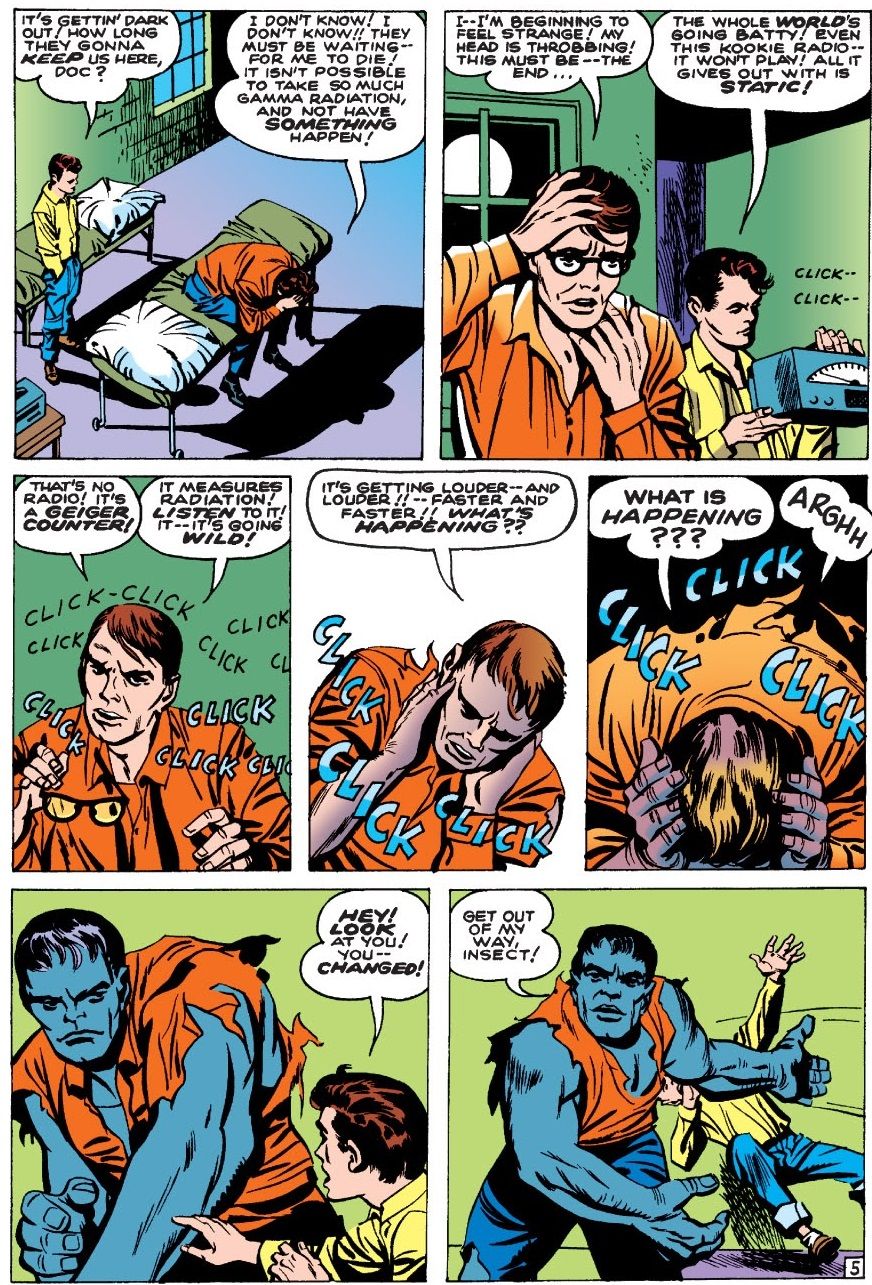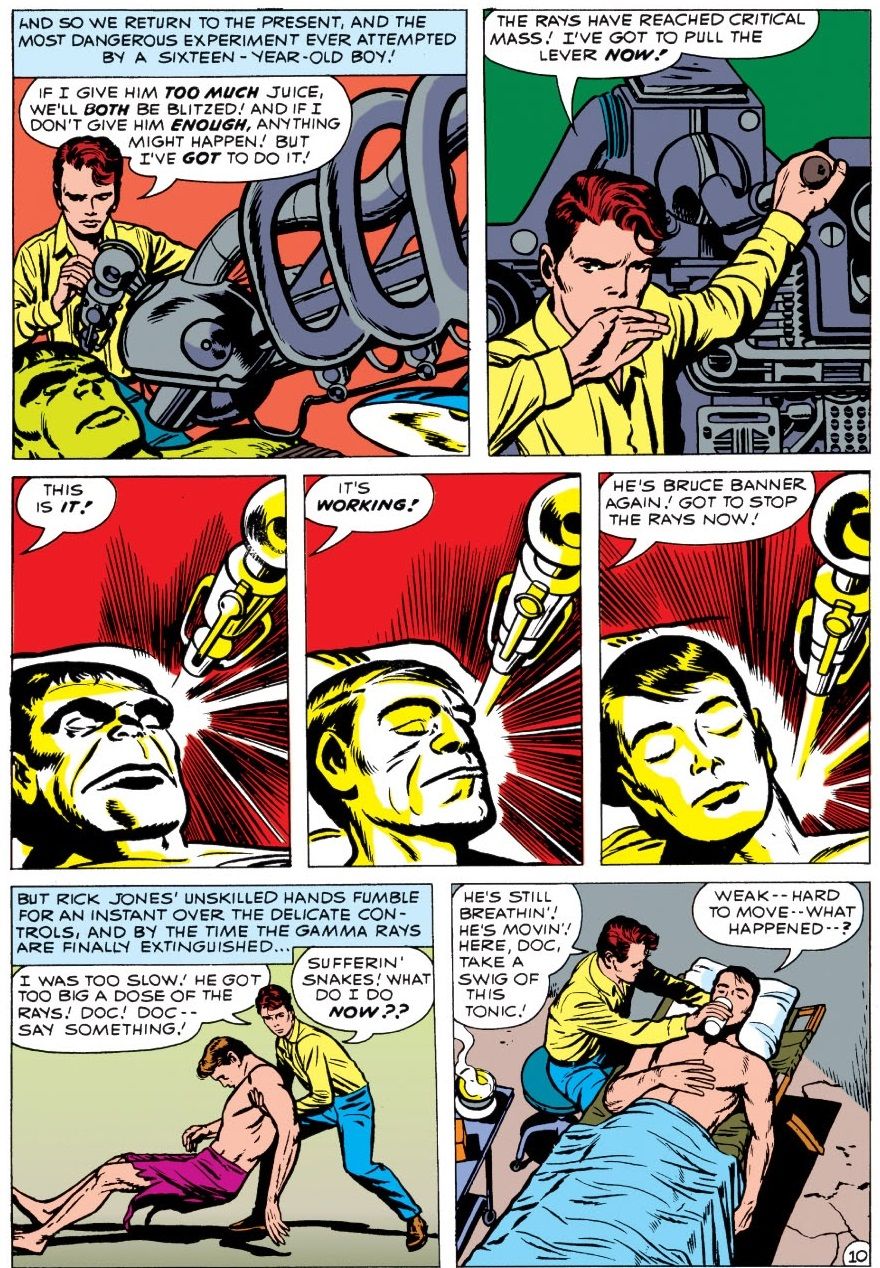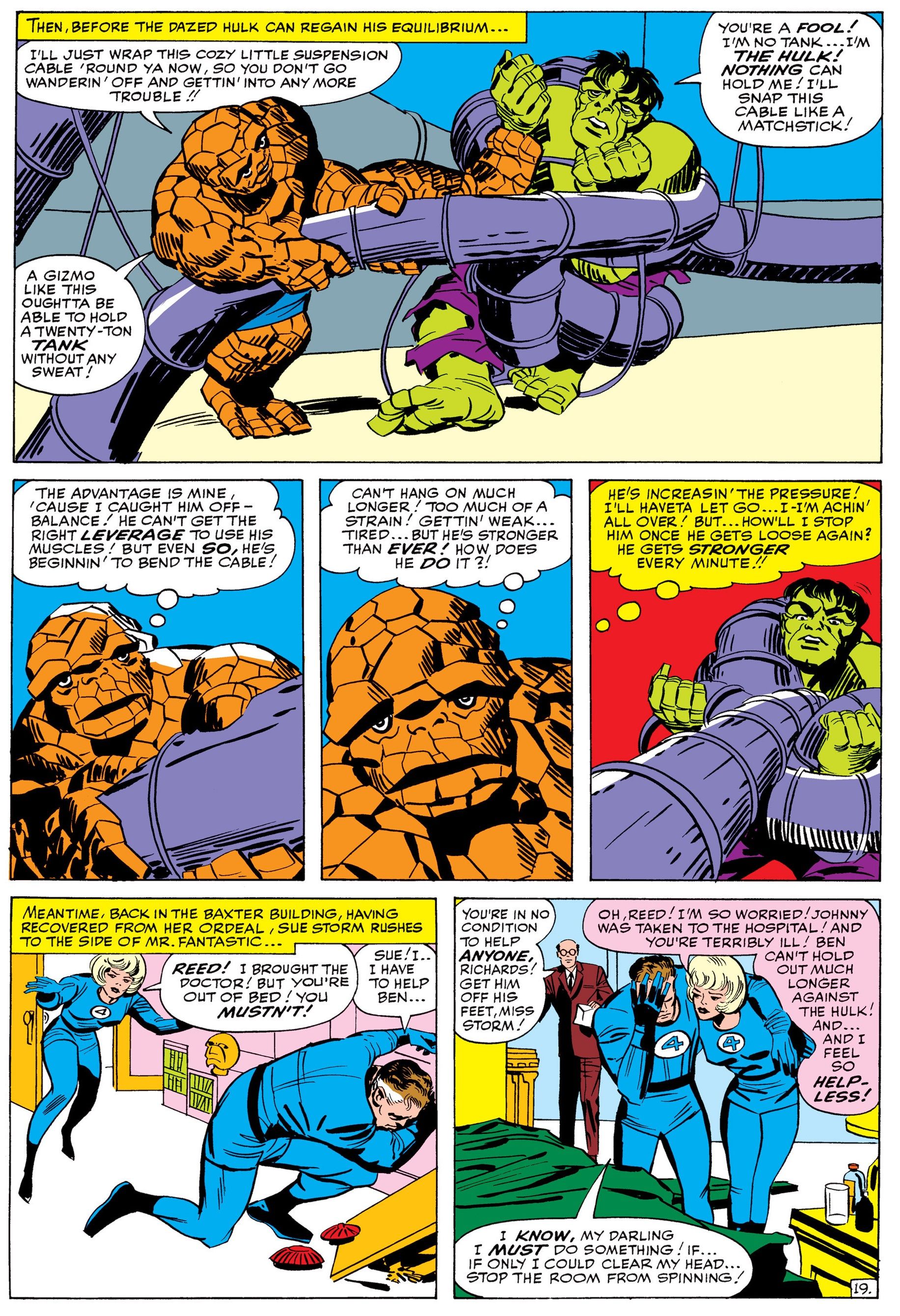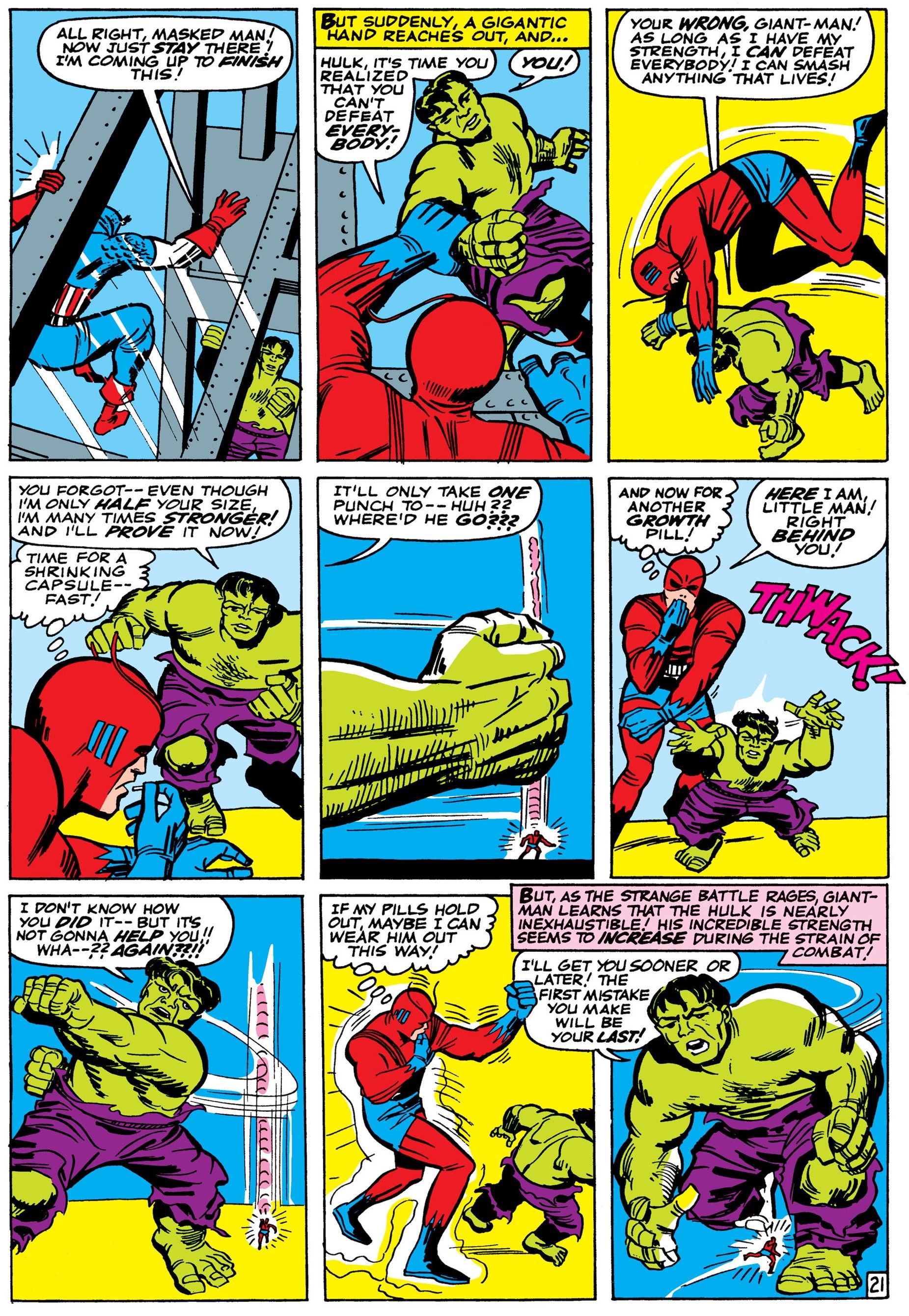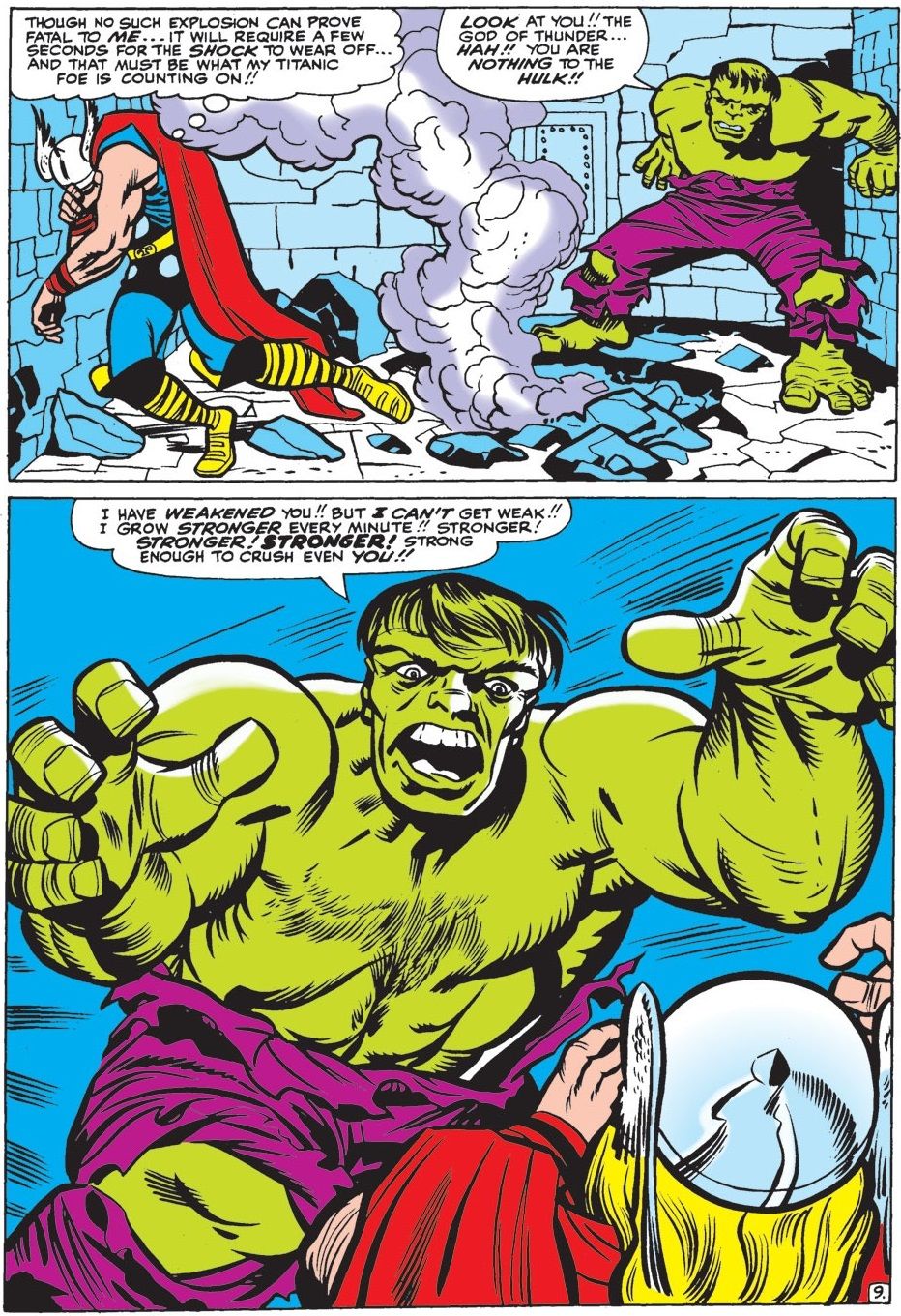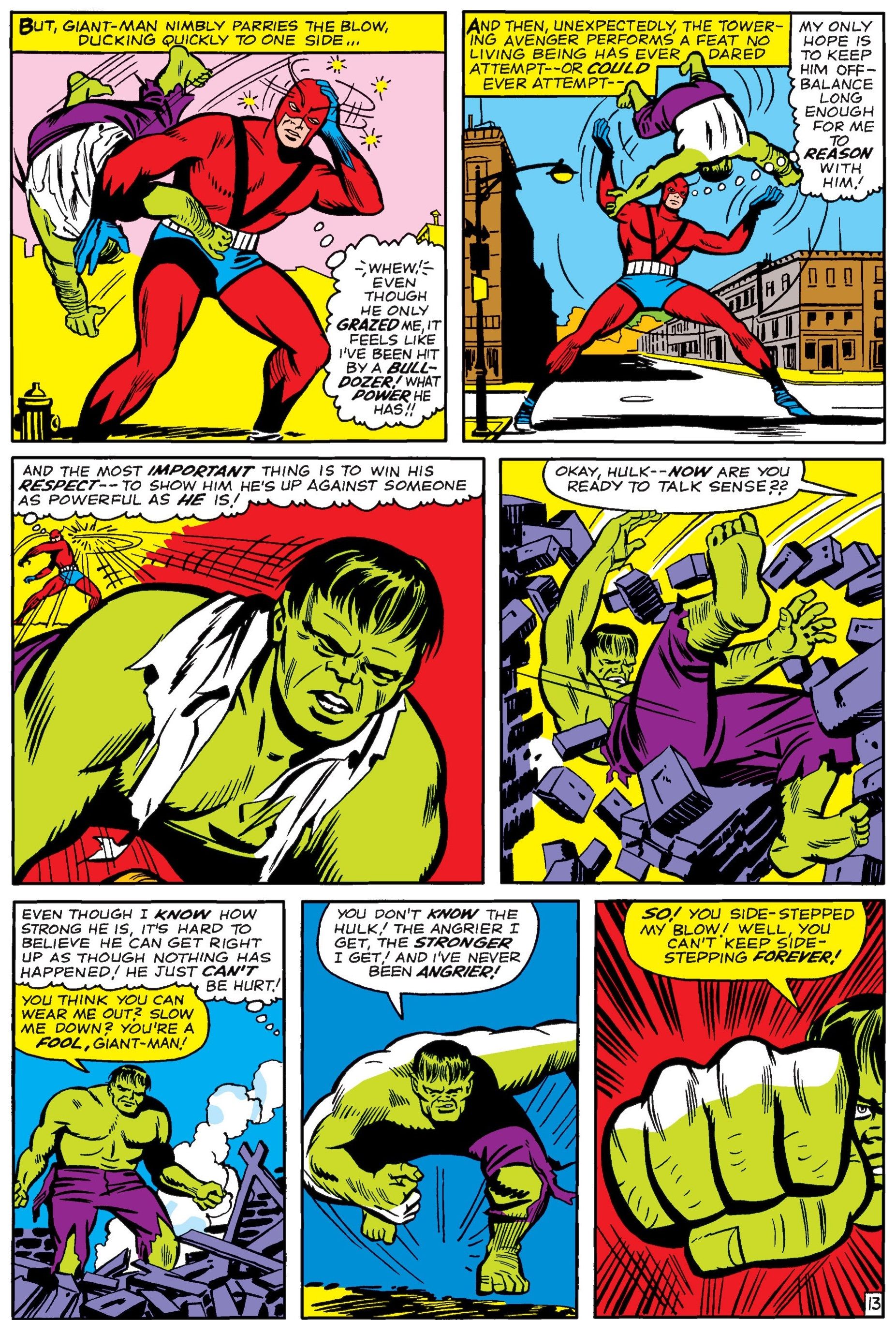Today, we look at when the Hulk's strength was first tied specifically to his anger.
In "When We First Met", we spotlight the various characters, phrases, objects or events that eventually became notable parts of comic lore, like the first time someone said, "Avengers Assemble!" or the first appearance of Batman's giant penny or the first appearance of Alfred Pennyworth or the first time Spider-Man's face was shown half-Spidey/half-Peter. Stuff like that.
Reader Philip S. wrote in to ask, "I have another question/suggestion for you regarding the Hulk: One of the things in comics I see many people discussing about is the strength level of the Hulk. One aspect that makes the argument such difficult as what I see is the "The Angrier Hulk Gets The Stronger He Is". That seems to let the argument go wherever you want. However, I really wonder when the first time was this rule came up. Or more basically, when was the first time Hulk's powers were connected to his state of anger at all (as I don't know if this rule is even really ever stated in the comics itself or was later just echoed by fans)? Nowadays Hulk is really connected - even for people outside of the superhero community - with anger as main motivation, but that wasn't really the case when he debuted. Hulk's Strength Is Tied to His Rage - But When Did That Begin?"
Great question, Philip!
When the Hulk debuted in Incredible Hulk #1 (by Jack Kirby, Stan Lee and Paul Reinman), his emotions really didn't factor into the equation at all, it was just a simple situation where he would turn into the Hulk at night and that was that. There was no specific connection between his mood and his strength. Although, it is worth noting that the Hulk's strength also seemed to be at a lower level in those early issues. That, though, seems more like traditional "power creep," where a character just happens to get more powerful as time goes by as writers just want to come up with more interesting things for them to do with their powers (Superman, of course, being the most famous example of this, going from "Well, so long as they don't throw a mortar shell at me, I should be okay" to "Move a planet? Sure, why not?")...
However, in the fourth issue of his short-lived original series (by Jack Kirby, Stan Lee and Dick Ayers), the Hulk was officially taken out of "night/day" being the reason for him changing back and forth as the Hulk and while it would take a while for him to go specifically into mood based transformations, it was at least a key change that allowed those other ideas to eventually take place.
It really is one of the great hilarious bits that the Hulk's original series only lasted six issues, and they are six of the most notable throwing junk at the wall stuff you'll ever see. I think I'll do a bit in the future of just HOW all over the place that original series is. It's just like they had no even SLIGHT idea what to really do with the character.
THE HULK'S ABILITIES CHANGED AFTER HE LOST HIS OWN TITLE
Amusingly, though, when his series ended, his place in the Marvel Universe suddenly made a whole lot more sense as he was now this big threat that the other heroes could react to, which was how he was used in Fantastic Four #12 (tied with Amazing Spider-Man #1 as the first official crossover of the Marvel Age) and then he was not only the threat that brought the Avengers together in Avengers #1, but he was also a founding member of the team and then their enemy in the next two issues (well, #2 was a shapeshifter, but basically it was the Avengers fighting the Hulk, who none of them trusted).
This led to the iconic Fantastic Four #25-26 two-parter (the first two parter of the series, right? I don't want to bother to actually check, but I am going to say that I'm right and that this was the series' first two-parter. Hmmmm...there were two issues in a row where they fight Doom, with Ant-Man involved in one of them. Were those two-parters, though, or were they just two Doom stories in a row? Are #5 and #6 a two-parter then? No, I am now sticking with my original position of #25 and #26 being the first two-parter in the series) by Jack Kirby, Stan Lee and George Roussos.
In the first issue, the Fantastic Four take on the Hulk while he is trying to find the Avengers to, well, avenge himself on the Avengers...
The Thing, the only member of the team that could even slightly hang with the Hulk, remarks that he can't believe that the Hulk, instead of weakening, seems to be getting STRONGER!
In the second part of the Brian Cronin-assured first two-part story in the history of the Fantastic Four, the Avengers join in on the fight and there is a caption that specifically mentions that he seems to be getting stronger the longer the fight is going...
The fight ends when Rick Jones uses some gamma capsules to turn Hulk back into Bob...oh wait, I mean Bruce Banner.
The Hulk then shows up in Journey Into Mystery #112 (by Jack Kirby, Stan Lee and Chic Stone), where we see a never-before-seen fight between the Hulk and Thor and Hulk brags about how he never gets tired...
WHEN THE HULK RETURNED TO HAVING HIS OWN FEATURE, HE CAME BACK ANGRY
After a run-in with Spider-Man in Amazing Spider-Man #14, this then takes us to Tales to Astonish #59, which sets up the Hulk's addition to the series as a new regular feature in the following issue by first having him fight the regular leads of the series, Giant-Man and Wasp. In this story (by Stan Lee, Dick Ayers and Paul Reinman), the Hulk finally explains why he gets stronger as the fight goes on, because his strength is tied to his anger...
And it's been that way ever since (well, I mean, you know, lots and lots of exceptions to that idea, but for the MOST part it still holds true).
There ya go, Philip! If anyone else wants to know about an interesting comic book first, just drop me a line at brianc@cbr.com!


